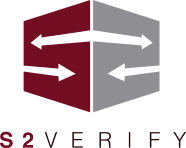Four Ways to Structure Your HR Team for 2024
Between a tight labor market, a rise in remote work, and a post-pandemic workforce with newfound priorities, the business of managing people is changing. In order to keep up with the shift, it’s time for HR departments to modernize their operations and the way they work—starting with the way the team is structured. Below are four ways to structure your HR team in 2024.
The Traditional, Centralized HR Structure
Characterized by a single HR department that handles all HR-related functions for the entire organization, a centralized structure ensures that all HR-related decisions and processes flow through a central HR unit in a hierarchical way. An HR manager, appointed by senior management, leads the HR team toward achieving specific KPIs. Under this manager, there are usually distinct leaders for recruitment, employee training, compliance, and other specializations. The centralized structure is best for larger companies since, by centralizing HR tasks, human resources ensures uniform training, compensation, and communications across all its divisions, enhancing operational efficiency.
Pros:
- Consistent standards and control
- High economies of scale due to centralized functions
- Comprehensive, critical mass of HR competencies/knowledge
- Clear lines of communication and authority
Cons:
- May not be as responsive to specific departmental, regional, or other business segments
- Sometimes inflexible and stuck in process
- Potential for bottlenecks in decision-making and difficulty communicating across multiple time zones, in multiple languages
The Decentralized HR Structure
In this HR structure, each business unit has its own specific HR team (i.e. by department, product line, or region). These teams operate semi-independently but collaborate, align on, and operate from the organization’s overall HR strategy. With decentralized departments, business units remain in control of decisions and prioritize local priorities.
Pros:
- Tailored HR solutions for specific departmental needs
- Faster decision-making and responsiveness
- Encourages ownership and accountability within departments
- Fosters collaboration between employees and management
Cons:
- Potential for inconsistency in HR policies across departments
- Higher costs, as each department has its own HR team
- Lower economies of scale
The Hybrid/Matrix HR Structure
Hybrid HR structures feature a combination of centralized and decentralized structures. The hybrid model has a central HR department that handles organization-wide policies and strategic initiatives and individual departments with HR representatives or teams to address specific needs—including centers of expertise that help support specialized HR policies and decisions. Employees might report simultaneously to the central HR head and their respective departmental heads.
Pros:
- Ensures consistency in policies while allowing flexibility for department-specific needs.
- Facilitates better communication between central HR and departmental HR units
Cons:
- Requires clear delineation of responsibilities to avoid overlaps, gaps, and general confusion
- Requires strong coordination and collaboration between central and departmental HR teams, which can be difficult to facilitate
The External, Fractional HR Structure
In this external HR solution, companies delegate primary HR duties to external agencies or third parties—a model common in small to medium-sized businesses. Instead of having a full-time HR team, companies hire experienced HR experts on a fractional basis, depending on their specific needs.
Pros:
- Cost-effective, especially for startups and small businesses that may not require a full-time HR team
- Access to a diverse pool of HR experts with varied experiences and specialties
- Flexibility to scale HR services up or down based on organizational needs
Cons:
- Generic support; HR consultants potentially lack a deep understanding of the company’s culture, dynamics, and goals
- Coordination and communication might be challenging, especially if the fractional HR professional is serving multiple clients
More Ideas
For more insights for structuring your HR team in 2024, listen to this week’s episode of America Back to Work: Expert Interview Series. We’re sitting down with Lauren Winans, the Chief Executive Officer of Next Level Benefits, an HR consulting practice offering clients access to fractional HR professionals for both short-term and long-term projects. With 20 years of human resources and employee benefits experience, Winans possesses a deep expertise in HR best practices and what resonates with employees.
Winans served as a senior HR leader and responsibly managed all aspects of health, welfare, absence management, and retirement at General Nutrition Centers, American Eagle Outfitters, and CONSOL Energy. While working for Highmark Blue Cross Blue Shield, Winans acquired an extensive knowledge of the health insurance industry.
Click here to watch or listen to the episode wherever you get your podcasts.







